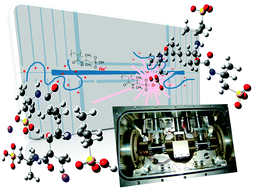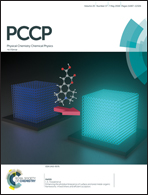Infrared laser dissociation of single megadalton polymer ions in a gated electrostatic ion trap: the added value of statistical analysis of individual events†‡
Abstract
In this study, we report the unimolecular dissociation mechanism of megadalton SO3-containing poly(2-acrylamido-2-methyl-1-propanesulfonic acid) (PAMPS) polymer cations and anions with the aid of infrared multiphoton dissociation coupled to charge detection ion trap mass spectrometry. A gated electrostatic ion trap (“Benner trap”) is used to store and detect single gaseous polymer ions generated by positive and negative polarity in an electrospray ionization source. The trapped ions are then fragmented due to the sequential absorption of multiple infrared photons produced from a continuous-wave CO2 laser. Several fragmentation pathways having distinct signatures are observed. Highly charged parent ions characteristically adopt a distinctive “stair-case” pattern (assigned to the “fission” process) whereas low charge species take on a “funnel like” shape (assigned to the “evaporation” process). Also, the log–log plot of the dissociation rate constants as a function of laser intensity between PAMPS positive and negative ions is significantly different.



 Please wait while we load your content...
Please wait while we load your content...